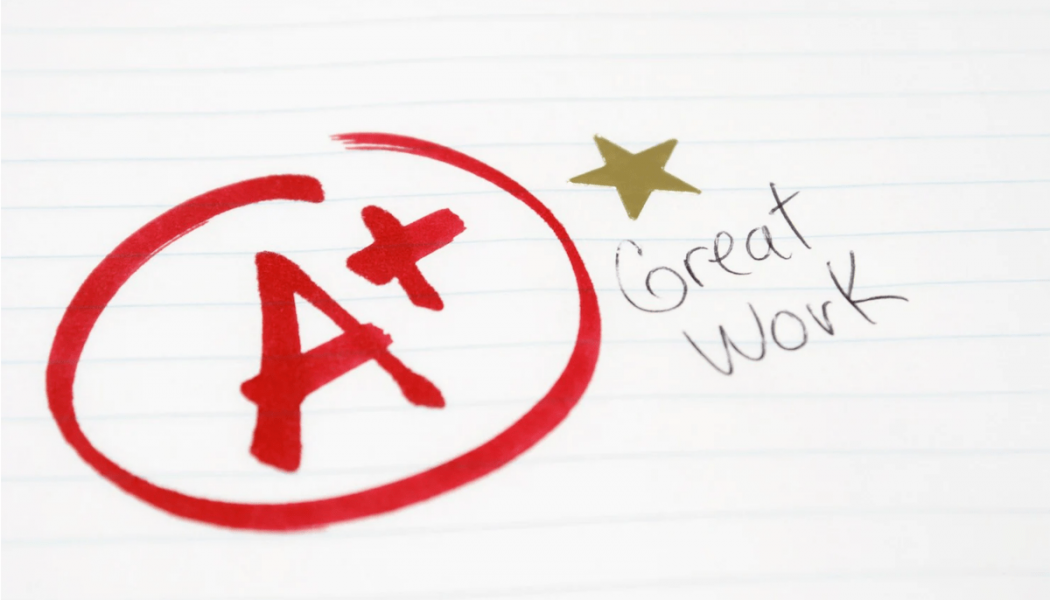
“When people lose the connection between their actions and their consequences, they lose their hold on reality and the further this goes the more it looks like madness.”
~ Robert Greene
A recent study conducted at the Naval Academy showed that students learn less from easy teachers. As the researchers state, “Instructors who tend to give out easier subjective grades… dramatically hurt subsequent student performance.” While a generalization, these claims support the intuitions of anyone who has ever been to school or met a human. When students can give less effort, they do. So, why have schools been moving toward easier grading?
In a decade working in high schools, I’ve seen a consistent push to reduce writing, reading, and note-taking, expand late work windows, lighten workloads, dilute the weight of assessments, and, most fundamentally, to eliminate failures. The same can be seen at the university level. The amount of time college students have spent on academic work has gone from 40 hours per week in 1961, to 27 in 2003, to less than 15 hours in 2008*. During that time, the average grade has risen in both public and private universities, while national SAT scores continue to decline. Today’s graduates are not smarter or more prepared for their future, but at least they think they are.
The roots of these trends can be found in generations of self-esteem culture and a gradual educational shift from a standards-driven approach to one of customer service. As consumerism enveloped society, our schools became more concerned with perception and appeasement than learning. School, in the eyes of parents and educators alike, became something to game—the lessons taught an arbitrary ritual that stood between students and the diploma they needed.
All the while, headlines continued to note America’s declining status in world education rankings. More money was targeted at shrinking gaps between different groups and supporting the disadvantaged, yet scores declined across nearly every demographic.
Still, schools are moving further away from standards. Walk into any high school professional development and you won’t hear discussion about what skills students will need for an uncertain future or about specific competencies that students are struggling to master. Instead, there is a parade of new strategies to make learning effortless. Schools have embraced the ideology of intrinsic motivation. If students aren’t invested in their learning, the thinking goes, it is because we haven’t made the environment fun enough, interesting enough, safe enough, or (education’s answer to everything), because we have not understood the ways that today’s digitally distracted youth learn and, consequently, have not integrated enough new technology.
To be fair, intrinsic motivation does matter, as does connecting with students and making content interesting. Furthermore, harder grading does not necessarily breed better learning. We’ve all had that amateurish teacher who hardly taught but made a point of asking obscure questions, as if being difficult would cover up their insufficiencies. There is, also, a lot more wrong with education than just low standards. We ignore movement and nutrition despite an obesity epidemic, prioritize broad, superficial curriculums, and neglect logic and critical analysis, which should be the backbone of post-elementary education. In an era of information overload, students are never taught to discern truth from falsehood and parents never guided towards strategies for limiting pernicious smartphone behavior.
Still, if you want to improve public education the place to start is by enforcing standards. We can debate what should be learned, how it should be taught, when, with how many breaks, or what the environment should look like, but when the grades stop reflecting mastery, the entire operation becomes performative. Grading becomes less meaningful. Teachers play the role of thermostat, cooling off grades as soon as they detect too many are in “hot water.” As a teacher of 20 years recently vented, “Just tell me what you want the grades to look like. I can make the breakdown whatever you like.”
Grades are a metric. Like all metrics, they are subject to missing immeasurable components—essential soft skills like how well you interact in groups or how you utilize body language in persuasive argument. Better teachers will develop the ability to detect and integrate these soft skills into grade determinations, but the grade will always be a crude approximation. Still, we must have metrics that intend to measure relevant data and represent it with as much accuracy as possible. A strength and conditioning coach knows that the translation between their workouts and each athlete’s sport is fuzzy. Helping a linebacker add 50 pounds to his back squat doesn’t predict how many more tackles he will make, yet we know it helps. We want to identify the trainable qualities that we believe will most influence his performance and we want to measure these qualities with as much accuracy as possible. If “nice” coaches shave off a few milliseconds when testing 40 yard dash times or randomly inflate athletes’ bench press numbers, then the data is compromised. The more this happens, the less valuable the data.
It is the same with school grades. Rampant grade inflation has made grades less useful while, ironically, making them the entire point of school. The subject becomes a means to an end. It is the topic for the activity that needs to be done to assign the grade.
What did you do today?
I had to fill out a chart matching New Deal policies with their effects.
What’s the New Deal?
I don’t know.
Thus, education devolves into a lot of activity for the sake of activity, with little recognition for what skills truly matter or for the ability of education to improve lives. The same has happened with standardized testing. When improving education becomes a priority, states roll out some new testing regime. The test is supposed to better assess how well students are learning, but the grading criteria are manipulated so that it is very difficult to see how well students have actually learned. Getting zero questions correct on this year’s Texas Biology STAAR test earns a score of 1418. To pass the STAAR students only have to get 19 of 54 questions correct, or as the state reports it, a 3550. Not that standardized testing is the answer. An overemphasis on these tests has led to the de-professionalization of classroom teachers and hurt educational quality, but the point remains. By making feedback confusing, we negate its ability to prompt appropriate adaptations.
The point of assigning grades is to give feedback—to reflect reality. When grades are distorted, they stop delivering feedback that would help teachers to accurately assess what was learned, students to accurately determine how well they are learning and prompt greater effort, and the entire system to adapt to the needs of students. This is especially the case among low-achieving students who are often passed through high school without developing the ability to write intelligible emails or to do basic addition. I’m constantly amazed by how many high-school athletes I train who simply cannot add weight totals in their head.
Many argue that everyone just needs a high-school diploma so they can move on with their lives. McDonald’s workers need a high-school diploma now too. But this has nothing to do with the skills a high-school diploma is supposed to guarantee. The only reason you would need a high-school diploma for low-skill jobs is because we have made it nearly impossible not to graduate. You don’t have to do anything but show up and occasionally turn something in. Not graduating is now the ultimate red flag. Likewise, we tell every student they need to pay tens of thousands of dollars to get a college diploma and then many go wait tables. By inflating grades across the board, we’ve created an insane labyrinth of debt where employers look for candidates with an unrelated college diploma, because it signals they’ve done more than waltz through high school. Our cultural expectations grow increasingly insane as the distance grows between reality and our social indicators.
I have a radical idea. Assign grades based exclusively on academic performance—the quality of the writing, the accuracy of the math equation, the understanding of the historical themes. Grade everything for mastery, alone, and consider it a breach of ethics to do otherwise. Most students would work far harder, learn far more, and come to enjoy it. They’d invest enough to cultivate more rewarding interests and become better citizens. Some would not rise to the occasion and would be left behind. But that is already happening.
So many students sit in algebra classes, lacking a grasp of basic arithmetic. We put students in positions where we know they won’t learn anything and, in the process, make a mockery of the entire system. What’s worse, this refusal to engage with reality precludes better adaptations—technical skill routes, reality-based community support initiatives, and focused remediation for those motivated to bridge gaps.
This past year, our students have learned less than ever because of the COVID-19 pandemic and the limitations of virtual learning. How much better might they have fared if they had not been trained to find excuses and expect they’d be passed along? How much more important is it now to have mastery-reflective grading so that we can diagnose gaps and target them? To suggest that we should grade dishonestly is to fundamentally misunderstand the point of education. It prolongs childhood, ensures less engagement, and reinforces a culture of deferred responsibility. Nothing could be more cruel.
Shane Trotter is a writer, high-school educator, and strength and conditioning coach in Texas. In addition to his personal development blog, Inspired Human Development, he writes for Breaking Muscle. His book, Kids These Days, will release this fall. You can follow him on Twitter @TrotterWrites, or through his website.
Image by Matt Benoit from Shutterstock
* The 2008 data are from a different study than the data for 1961 and 2003, so we cannot rule out the possibility that the disparities are driven by differences in methodology.
Correction: An additional reference has been provided for the claim “The amount of time college students have spent on academic work has gone from 40 hours per week in 1961, to 27 in 2003, to less than 15 hours in 2008” that was not included in the original version of this article. Additionally, the year reported for a statistic was incorrectly stated as 1960 instead of 1961. This has been corrected. We apologize for the error.
Join Our Telegram Group : Salvation & Prosperity








